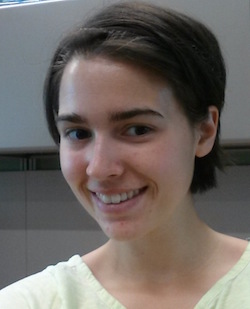Our Team
Igal Szleifer, Principal Investigator
THE FOCUS OF OUR RESEARCH IS IN THE MOLECULAR MODELING OF BIOINTERPHASES. OUR WORK IS AIMED AT THE FUNDAMENTAL UNDERSTANDING OF THE PROPERTIES OF COMPLEX MOLECULAR SYSTEMS THAT ENCOMPASS PROBLEMS AT THE INTERFACE BETWEEN MEDICINE, BIOLOGY, CHEMISTRY, PHYSICS AND MATERIALS SCIENCE. OUR GROUP CONCENTRATES ON THE DEVELOPMENT AND APPLICATION OF THEORETICAL APPROACHES THAT ENABLE THE STUDY OF THE SYSTEMS OF INTEREST AT THE MOLECULAR LEVEL. THE RESULTS OF THESE STUDIES ARE THEN USED IN THE DESIGN OF OPTIMAL MATERIALS THAT INTERACT WITH BIOLOGICAL ENVIRONMENTS, MOST OF OUR PROJECTS ARE CARRIED OUT IN CLOSE COLLABORATION WITH EXPERIMENTAL COLLABORATORS. OUR THEORETICAL WORK HAS THE DUAL PURPOSE OF: 1) THE FUNDAMENTAL UNDERSTANDING OF WHAT ARE THE MOLECULAR FACTORS THAT DETERMINE THE PROPERTIES AND BEHAVIOR OF THE INTERACTIONS BETWEEN BIOLOGICAL ENVIRONMENTS AND SYNTHETIC SYSTEMS, AND 2) THE ABILITY TO PREDICT IN A QUANTITATIVE WAY EXPERIMENTAL SYSTEMS IN ORDER TO USE THE THEORETICAL APPROACHES AS A DEVICE TOOL FOR THE ENGINEER OF NEW MATERIALS, SUCH AS BIOCOMPATIBLE MATERIALS AND DRUG CARRIERS.
Rikkert Nap, Research Assistant Professor
RNAP@NORTHWESTERN.EDU |
MY RESEARCH FOCUSES ON THE INVESTIGATION OF NEUTRAL POLYMERS AND POLYELECTROLYTES TETHERED TO VARIOUS CURVED SURFACES, SEEKING BOTH FUNDAMENTAL AS WELL AS PRACTICAL UNDERSTANDING OF THEIR BIOMEDICAL APPLICATIONS. WE HAVE APPLIED A MOLECULAR THEORY DEVELOPED WITH THE RESEARCH GROUP TO THE UNDERSTANDING OF, FOR EXAMPLE, THE BINDING OF POLYMER TETHERED MICELLES AND SOLID NANO PARTICLES TO CELL SURFACES FOR DRUG DELIVERY DEVICES. LIKEWISE THE BEHAVIOR OF CYLINDRICAL WEAK POLYELECTROLYTES AS A MODEL SYSTEM FOR AGGRECAN MOLECULES IS BEING INVESTIGATED.
Estefania Gonzalez Solveyra, Postdoctoral Fellow
ESTEFANIA.SOLVEYRA@NORTHWESTERN.EDU |
MY RESEARCH INTERESTS ENCOMPASS MOLECULAR MODELING OF BIOMATERIALS, PARTICULARLY, NANOPARTICLES FOR CANCER THERANOSTIC APPLICATIONS, USING THEORETICAL AND COMPUTER MODELING APPROACHES. WORKING IN CLOSE COLLABORATION WITH AN EXPERIMENTAL GROUP, WE AIM TO UNDERSTAND THE INTERACTIONS BETWEEN NANOMATERIALS AND BIOMOLECULES IN RELEVANT PROCESSES FOR BIOMEDICAL APPLICATIONS, SUCH AS ANTIFOULING AND LIGAND-RECEPTOR BINDING BEHAVIOR. THE FOCUS IS SET ON HOW THE CURVATURE MODULATES SUCH INTERACTIONS, WITH THE ULTIMATE GOAL OF OBTAINING NON-UNIFORM FUNCTIONALIZED NANOPARTICLES, DRIVEN MAINLY BY CURVATURE EFFECTS. THIS HYBRID STRATEGY REFLECTS THE STRENGTH OF AN ADEQUATE MOLECULAR MODELING COMBINED WITH STATE OF THE ART EXPERIMENTAL TECHNIQUES TO GAIN FUNDAMENTAL UNDERSTANDING IN COMPLEX BIOLOGICAL SYSTEMS, AND TRULY DIRECT THAT KNOWLEDGE INTO A RATIONAL WAY TO DESIGN AND DEVELOP NOVEL CANCER TARGETING CONSTRUCTS
Sung Hyun Park, Postdoctoral Fellow
parksh@northwestern.edu |
My main research involves computer modeling and analysis of peptoid molecules, a synthetic peptidomimetic biopolymer class with many distinct properties suitable for a variety of applications in biomedicine, therapeutics, and other areas. In close collaboration with an experimental group, we are trying to understand structural and dynamical properties of a series of peptoid oligomers that have strong anti-fouling functionalities. Employing molecular dynamics simulation, we aim to understand the mechanism of anti-fouling functionality at a molecular level and provide rational design strategy for the development of functional peptoids. My other projects include interactions of water nanodroplets with hydrophobic surfaces, surface charge effects on ice melting, adsorption of DOPA-LYS biomimetic peptide segments on TiO2 surfaces, sequence specificity of peptides in β-amyloid formation, and adsorption/desorption of alkanethiols on gold surfaces.
Kai Huang, Postdoctoral Fellow
khuang15@northwestern.edu |
My research focuses on the behavior of macromolecules in confined geometries such as biological and artificial nanochannels. The current directions are: rational design of smart nanochannel functionalized with sequence-controlled amphiphilic polymers, understanding the structure of the disordered proteins (FG-nups) in the central channel of the nuclear pore complex, and exploration of the pattern-rich micro-phase-separation of hydrophobic polymers tethered on surfaces with various curvatures.
Shiyi Qin, Postdoctoral Fellow
qin.Shiyi@northwestern.edu
My current research research is focused on designing stimuli-responsive nanopores which can control the transport of biological masses. Inspired by the nuclear pore complex, my interest is to design nanopore grafted with polymers which can mimic the intrinsically disordered proteins or nucleoporins. The morphology transition and energy barrier are explored under different salt concentration and pH condition to study selective transport through the nanopore.
Anne Shim, Graduate Student
anneshim2015@u.northwestern.edu |
My research is about understanding how the environment of the nucleus influences the function of both healthy cells and cancer cells. The nucleus has a highly crowded environment, meaning there is a large amount of macromolecules ("crowders") that reside in the nucleus. Crowders make up the nanoarchitecture of the nucleus because on the nanoscale they act like scaffolding for other structures in the nucleus, but they can also get in the way of nuclear processes that are occurring. This causes crowders to drastically change the equilibria of chemical reactions in the nucleus. The chemical reaction we study is transcription, because it is the first step in gene expression, which determines how a cell will function. We study transcription in both healthy cells and in cancer to determine how cancer cells function differently than healthy cells based only on changes to their environment.
Past Members
Luis Lopez, Postdoctoral Fellow
LUIS.LOPEZ@NORTHWESTERN.EDU |
AS A MEMBER OF THE CENTER FOR BIO-INSPIRED ENERGY SCIENCE (CBES), MY RESEARCH IS FOCUSED ON UNDERSTANDING AND DESIGNING STIMULI-RESPONSIVE NANOPORES AND NANOCHANNELS THAT CAN SELECTIVELY TRANSPORT MOLECULES AND IONS THROUGH ARTIFICIAL MEMBRANES. MORE SPECIFICALLY, BY MEANS OF A MOLECULAR THEORY DEVELOPED BY THE SZLEIFER GROUP OVER TIME, I HAVE BEEN STUDYING THE EFFECTS OF IONIC CROSSLINKING AND NANOCONFINEMENT ON THE PH-GATING PROPERTIES OF NANOCHANNELS FUNCTIONALIZED WITH WEAK POLYELECTROLYTES. RECENTLY, WE STARTED A COLLABORATION WITH AN EXPERIMENTAL GROUP IN ORDER TO TEST SOME UNEXPECTED AND INTERESTING THEORETICAL PREDICTIONS. IF CONFIRMED, OUR FINDINGS COULD LEAD TO THE DEVELOPMENT OF NANOGATES WITH A VERY SENSITIVE STIMULI-RESPONSE.
Bethany Powell, Graduate Student
Recently Graduated
bethanypowell2018@u.northwestern.edu |
My research focuses on the effect of hormones on athletic injury in women. Women are several times more likely to tear an anterior cruciate ligament (ACL) than men during athletic activities. Many factors contribute to this discrepancy, including hormonal differences. The hormones estrogen, relaxin, and progesterone are present at much higher concentrations in women than in men. These hormones modulate the matrix metalloproteinases (MMPs), which degrade collagen, the major constituent of ligament. Estrogen and relaxin induce MMPs, while progesterone suppresses the action of MMPs. The interplay between estrogen, relaxin, and progesterone leads to monthly fluctuations in MMPs in women, and these fluctuations may lead to varied collagen degradation throughout each month. My goal is to understand how the fluctuating, hormone-regulated MMPs affect collagen at multiple length and time scales, starting at the nanoscale and moving to the microscale. From this multiscale model, we will be able to better understand how hormones contribute to collagen degradation and athletic injury risk in women.
Wenli Wu, Graduate Student
Recently Graduated
wenliwu2018@u.northwestern.edu |
My research focus is about developing a model to build the link between physical structures of cell nuclei and their genomic function. This project involves both simulation and theory and the final results are compared with a DNA microarray experiment.
Simona Morochnik, Graduate Student
Recently Graduated










